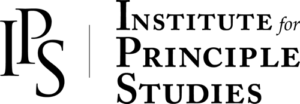Why It’s Important to Evaluate Your Organization More than Once a Year
As we approach the midpoint of the year, it’s crucial for churches and nonprofits to take a step back and evaluate their financial health. Conducting a mid-year review of both your budget and contributions is essential for several reasons. This proactive approach ensures that your organization stays on track, identifies potential issues early, and adapts to any changes in circumstances. Here are key reasons why a mid-year review of your budget and contributions is valuable:
1. Assessing the Budget: Staying on Track
A. Monitoring Expenses
A mid-year budget review allows you to compare your actual expenses against your projected budget. This comparison helps identify any discrepancies or unexpected costs. If you’re over budget in certain areas, this is the time to make necessary adjustments to avoid financial shortfalls.
Most ministry financial activity happens in the 3rd and 4th quarters of the calendar year. By looking at your budget mid-year, you can prepare for that increased activity. This foresight helps manage the surge in expenses and ensures funds are appropriately allocated.
This examination can also help you to determine if deviations from the budget are balancing out naturally (such as lower contributions matched by lower expenses) or if they require corrective actions (e.g., significant income shortfalls).
B. Reevaluating Priorities
Halfway through the year, priorities may have shifted; new opportunities or challenges could have emerged, requiring a reallocation of funds. Reviewing your budget helps ensure that your financial resources are aligned with your current mission and goals.
If one ministry area is significantly below budget, you might consider reallocating extra funds to another department that may need it more. This flexibility ensures that all areas of the ministry are adequately supported
C. Working with Department Leaders
Provide department leaders with a detailed copy of their spending and budget. Ask them to review the rest of the year to determine if they’re on target or if adjustments are needed. This collaborative approach ensures that all areas of the ministry are prepared and aligned with the overall budget.
Churches and nonprofits have a responsibility to manage their finances with integrity and transparency. Regularly reviewing your budget enhances accountability and demonstrates good stewardship to your donors.
2. Evaluating Contributions: Understanding Donor Trends
A. Tracking Donation Patterns
Analyzing your contributions mid-year helps you understand donor trends. Are donations consistent with your projections? Are there seasonal fluctuations? Identifying these patterns can help you plan more effective fundraising strategies for the second half of the year.
B. Engaging Donors
This is an excellent opportunity to share with donors what you have been doing with their contributions. For example, sending a mid-year giving statement with an update on ministry work can help donors understand the impact their giving has had. Consider including a letter like this:
“Because of your generous contributions to [Ministry Name], we’ve been able to:
- Send xx students to youth camp.
- Host a Vacation Bible School attended by xx kids.
- Reach xx people with the Gospel message.
- [Other accomplishments]
Your support is making a significant difference in our ministry and in our community.”
Maintaining open communication with your donors fosters loyalty and ongoing support.
C. Forecasting Future Income
A mid-year contribution review helps forecast your income for the remainder of the year. This forecasting is crucial for planning programs and activities. Understanding your financial outlook allows you to make informed decisions about potential expansions or necessary cutbacks.
Practical Steps for Conducting a Mid-Year Review
A. Gather Financial Reports
Start by collecting all relevant financial reports, including your budget, income statements, and balance sheets. Accurate and up-to-date records are essential for a meaningful review.
B. Involve Key Personnel
Involve key members of your organization in the review process. This could include board members, finance committee members, and department heads. Their insights and perspectives are valuable in understanding the bigger picture.
C. Set New Goals
Based on your review, set new financial goals for the remainder of the year. Whether it’s adjusting your budget, launching a new fundraising campaign, or cutting costs, having clear goals will guide your actions moving forward.
D. Communicate Findings
Communicate the results of your mid-year review to your team. Transparency builds trust and ensures everyone is on the same page regarding the organization’s financial health and priorities.
A mid-year review of your budget and contributions is not just a good practice—it’s a vital component of financial management for churches and nonprofits. This review helps ensure that your organization remains financially healthy and focused on its mission. By proactively assessing your financial position, you can make informed decisions, engage with your donors, and continue to make a positive impact in your community. Remember, good stewardship and effective financial planning are keys to your organization’s success and sustainability.












































